How to choose the right Material Handling Equipment for your warehouse?
Date Posted:19 August 2024
Choosing the right material handling equipment is critical to the efficiency, safety, and productivity of your warehouse operations. By understanding your specific needs and carefully evaluating your options, you can make informed decisions that will..
Running a warehouse is akin to conducting an orchestra, where every piece of equipment plays a crucial role in the harmony of operations. In the heart of Australia's industrial and commercial hubs, from the docks of Fremantle to the logistics centres of Brisbane, the right material handling equipment can make or break your efficiency. Here’s your guide to choosing the perfect gear to keep your warehouse running like a well-oiled machine.
Understand Your Needs
Before you dive into the sea of options, it’s essential to grasp the unique demands of your warehouse. Consider these factors:
- Type of Goods: Are you handling heavy machinery parts or delicate electronics? The nature of your inventory will dictate the type of equipment you need.
- Volume: How much product moves through your warehouse daily? High-volume operations may require more robust and automated solutions.
- Space Constraints: Consider the layout and size of your warehouse. Compact spaces might benefit from more agile and versatile equipment.
Types of Material Handling Equipment
Material handling equipment falls into several categories, each designed to meet specific needs. Let’s break down the key types:
- Storage Equipment: This includes shelves, racks, and pallets. The goal is to maximise space and improve organisation.
- Pallet Racking Systems: Ideal for heavy goods and high-density storage.
- Shelving Units: Best for smaller items and can be adjusted for flexibility.
- Engineered Systems: Automated and semi-automated systems for high-efficiency operations.
- Conveyor Systems: Essential for moving goods across different points in the warehouse.
- Automated Storage and Retrieval Systems (AS/RS): Great for high-density storage with minimal labour.
- Industrial Trucks: Includes forklifts, pallet jacks, and hand trucks.
- Forklifts: Perfect for heavy lifting and moving pallets. Available in various sizes and fuel types.
- Pallet Jacks: Manual or powered, ideal for moving pallets over short distances.
- Hand Trucks: For smaller loads and easier manoeuvrability.
- Bulk Material Handling Equipment: Used for handling and storing bulk materials like grains, coal, or sand.
- Conveyors: To transport bulk materials efficiently.
- Bucket Elevators: For lifting materials vertically.
- Miscellaneous Equipment: Includes everything else from carts and dollies to cranes and hoists.
Key Considerations for Choosing Equipment
- Load Capacity: Ensure the equipment can handle the maximum weight you need to move. Overloading can lead to equipment failure and safety hazards.
- Durability and Maintenance: Look for equipment made from high-quality materials that can withstand the rigours of daily use. Consider the ease of maintenance and availability of replacement parts.
- Safety Features: Safety should be a top priority. Choose equipment with essential safety features like load stabilisers, emergency stop buttons, and non-slip surfaces.
- Ergonomics: Equipment that is easy to use reduces worker fatigue and the risk of injury. Look for designs that offer adjustable handles, comfortable grips, and intuitive controls.
- Mobility and Flexibility: Depending on your warehouse layout, you may need equipment that is easy to manoeuvre. Compact and agile machines are ideal for tight spaces.
- Cost vs. Value: While budget constraints are a reality, it’s crucial to balance cost with long-term value. Investing in high-quality, durable equipment can save money in the long run through reduced maintenance and replacement costs.
Tips for Making the Right Choice
- Consult with Experts: Don’t hesitate to seek advice from professionals who specialise in material handling equipment. They can provide insights based on your specific needs and industry standards.
- Test Before You Buy: Whenever possible, test the equipment in your warehouse environment. This helps ensure it meets your operational needs and integrates well with existing systems.
- Employee Training: Even the best equipment is only as good as the people using it. Provide thorough training for your staff to ensure they can operate the equipment safely and efficiently.
- Future-Proofing: Consider your long-term needs. Choose equipment that can adapt to changes in your operations, such as increased load capacities or technological advancements.
- Leverage Technology: Modern warehouses benefit significantly from integrating technology. Look for equipment that can interface with warehouse management systems (WMS) or incorporate IoT sensors for real-time monitoring and maintenance alerts.
Choosing the right material handling equipment is critical to the efficiency, safety, and productivity of your warehouse operations. By understanding your specific needs and carefully evaluating your options, you can make informed decisions that will enhance your workflow and drive success.



































































































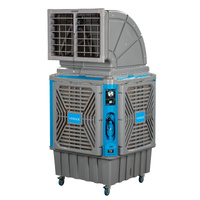









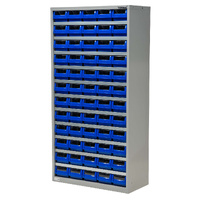


















 Trolleys & Hand Trucks
Trolleys & Hand Trucks Cage Trolleys
Cage Trolleys Cleaning Carts & Trolleys
Cleaning Carts & Trolleys Construction Trolleys
Construction Trolleys Custom Trolleys
Custom Trolleys Hand Trucks & Dollies
Hand Trucks & Dollies Laundry/Linen Trolleys
Laundry/Linen Trolleys Lifting Trolleys
Lifting Trolleys Order Picking Trolleys
Order Picking Trolleys Panel Cart Trolleys
Panel Cart Trolleys Platform Trolleys
Platform Trolleys Powered Trolleys
Powered Trolleys Shelf & Tiered Trolleys
Shelf & Tiered Trolleys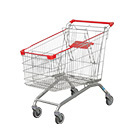 Shopping Trolleys
Shopping Trolleys Stainless Steel Trolleys
Stainless Steel Trolleys Tool Trolleys
Tool Trolleys Utility & Service Carts
Utility & Service Carts Lifting & Handling Equipment
Lifting & Handling Equipment Forklift Attachments
Forklift Attachments Jib Attachments
Jib Attachments Lifting Hoists & Pallet Hooks
Lifting Hoists & Pallet Hooks Load Skates & Tow Tugs
Load Skates & Tow Tugs Manual Stackers & Lifters
Manual Stackers & Lifters Pallet Jacks
Pallet Jacks Pallet Lifters
Pallet Lifters Pallet Rotators & Dispenser
Pallet Rotators & Dispenser Powered Pallet Trucks & Electric Lifters
Powered Pallet Trucks & Electric Lifters Scissor Lift Trolleys and Tables
Scissor Lift Trolleys and Tables Conveyor Equipment
Conveyor Equipment Conveyor Frames & Stands
Conveyor Frames & Stands Roller & Skate Conveyors
Roller & Skate Conveyors Ladders & Access Equipment
Ladders & Access Equipment Container & Yard Ramps
Container & Yard Ramps Ladders & Step Stools
Ladders & Step Stools Work Platforms & Crane Cages
Work Platforms & Crane Cages Drum Handling Equipment
Drum Handling Equipment Drum Storage & Bunding
Drum Storage & Bunding Drum Trolleys & Lifters
Drum Trolleys & Lifters Forklift Drum Handling
Forklift Drum Handling Waste Handling & Bins
Waste Handling & Bins Bin Lifters & Tippers
Bin Lifters & Tippers Plastic Waste & Wheelie Bins
Plastic Waste & Wheelie Bins Steel Waste & Tipping Bins
Steel Waste & Tipping Bins Waste Carts
Waste Carts Dangerous Goods Storage & Spillage
Dangerous Goods Storage & Spillage Aerosol Cans Storage Cages
Aerosol Cans Storage Cages Bunded Pallets & Storage
Bunded Pallets & Storage Corrosive Goods Storage Cabinets
Corrosive Goods Storage Cabinets DG Storage & Trolleys
DG Storage & Trolleys Flammable Liquid Cabinets
Flammable Liquid Cabinets Forklift Gas Storage Cages
Forklift Gas Storage Cages Site Storage
Site Storage Spill Kits
Spill Kits Shelving & Storage Equipment
Shelving & Storage Equipment Stillage & Transport Cages
Stillage & Transport Cages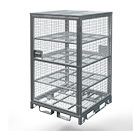 750 Series Cage Configurations
750 Series Cage Configurations Heavy Duty Cabinets
Heavy Duty Cabinets Heavy Duty Shelving
Heavy Duty Shelving Mega Bins & Pallets
Mega Bins & Pallets Packing & Workbenches
Packing & Workbenches Parts Trays & Stor-Pak Bins
Parts Trays & Stor-Pak Bins Pegboard & Louvre Panels
Pegboard & Louvre Panels Plastic Bins & Crates
Plastic Bins & Crates Plastic Handling Solutions Bins
Plastic Handling Solutions Bins Plastic Pallets
Plastic Pallets Stack & Nest Bins
Stack & Nest Bins Pallet Racking Accessories
Pallet Racking Accessories Workplace Equipment
Workplace Equipment Modular Workbenches
Modular Workbenches Electric Height-Adjustable Workbenches
Electric Height-Adjustable Workbenches Floor Matting
Floor Matting General Workplace Equipment
General Workplace Equipment Industrial Weighing Scales
Industrial Weighing Scales Packaging Machinery
Packaging Machinery Stationery Cupboards
Stationery Cupboards Storage and Stillage Cages
Storage and Stillage Cages Tool Trolleys
Tool Trolleys Tooling Cabinets
Tooling Cabinets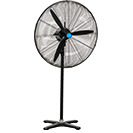 Workshop Fans and Coolers
Workshop Fans and Coolers Safety Barriers, PPE & Signage
Safety Barriers, PPE & Signage Barriers & Bollards
Barriers & Bollards First Aid Equipment
First Aid Equipment Gloves, Knives and PPE
Gloves, Knives and PPE Signage
Signage Cleaning & Site Supplies
Cleaning & Site Supplies Cleaning Equipment
Cleaning Equipment Cleaning Trolleys
Cleaning Trolleys Rubbish Bins
Rubbish Bins Signs & Traffic Supplies
Signs & Traffic Supplies Construction Equipment
Construction Equipment Construction Trolleys
Construction Trolleys Waste Handling
Waste Handling General Site Equipment
General Site Equipment Concrete Equipment
Concrete Equipment Site Storage
Site Storage Lifting Equipment
Lifting Equipment Verdex Specials
Verdex Specials










